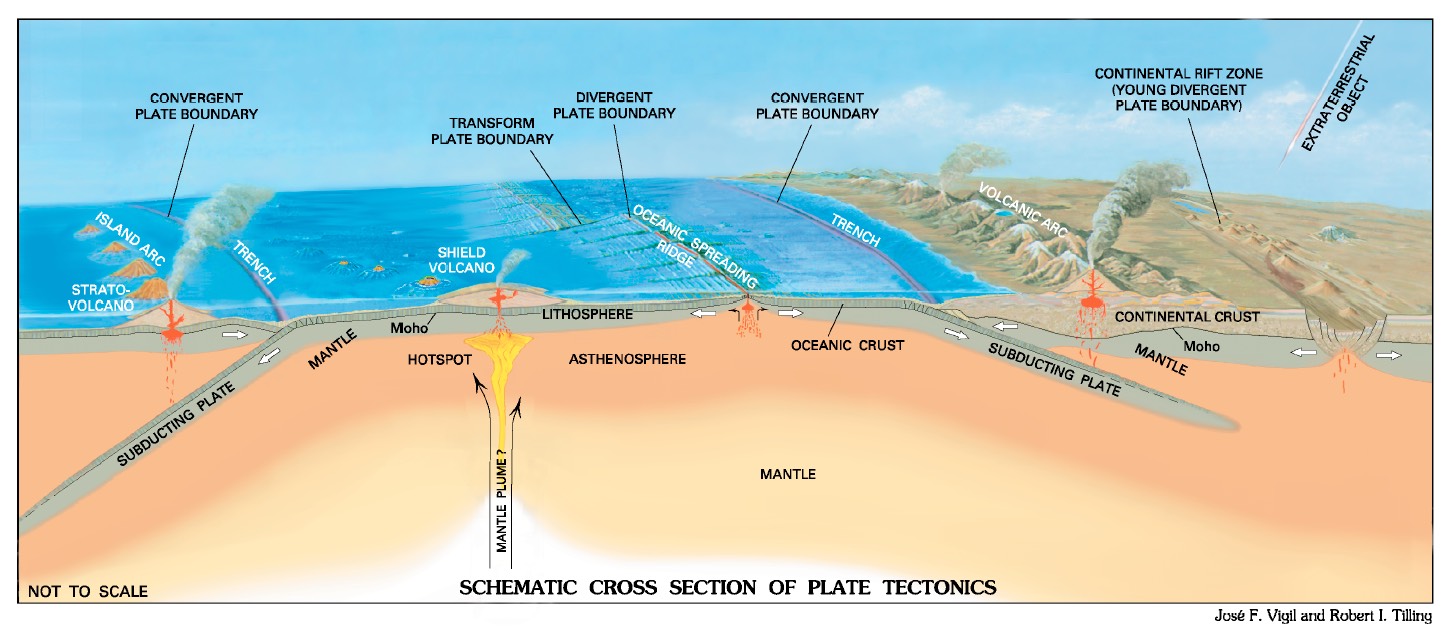2.6 Why? Convergent plate boundaries
Why do igneous rocks form at convergent plate boundaries? Figure 2.03 reproduced above is a schematic cross section of the earth's surface from This Dynamic Planet. Two types of convergent plate boundaries are shown, an ocean-continent boundary and an ocean-ocean boundary, each with a chain of volcanoes on the surface above a subduction zone. In Figure 2.03, redish magma drops are drawn beneath the volcanic chains of both types of convergent boundaries, but no explanation for the magma is given. What do you believe is the reason for volcanoes at convergent plate boundaries? Choose from the following list and press "Enter":
Yes! Sediment and hydrated ocean crust heat up and metamorphose, releasing water due to dehydration reactions in subduction zones. If the overlying mantle is hot enough, water from the downgoing slab causes the peridotite in the overlying mantle to melt. When enough magma is formed, it collects and rises through the upper plate it to feed volcanoes.
Let's look at the evidence for this conclusion. Some of the evidence comes from geophysics, some from petrology.
No. Sediment and hydrated ocean crust heat up and metamorphose, releasing water due to dehydration reactions in subduction zones. If the overlying mantle is hot enough, water from the downgoing slab causes the peridotite in the overlying mantle to melt. When enough magma is formed, it collects and rises through the upper plate it to feed volcanoes.
Let's look at the evidence for this conclusion. Some of the evidence comes from geophysics, some from petrology.

Figure 2.03. Schematic cross section of plate tectonics. A simplified cross section of important features of tectonic plates and their interactions by José F. Virgil and Robert I. Tilling (Simkin et al., 2006, This Dynamic Planet). Click on the image to see a larger version with more information.